
Transcription
LOS ANGELES COMMUNITY COLLEGE DISTRICTBOARD OF TRUSTEESSteve Veres, PresidentTina Park, First Vice PresidentNancy Pearlman, Second Vice PresidentKelly CandaeleMona FieldMiguel SantiagoScott J. SvonkinDaniel Campos, Student TrusteeDISTRICT ADMINISTRATIONDr. Daniel J. LaVista, ChancellorDr. Adriana D. Barrera, Deputy ChancellorDr. Yasmin Delahoussaye, Vice Chancellor forEducational Programs and Institutional EffectivenessFelicito Cajayon, Vice Chancellor for Economic and Workforce DevelopmentJeanette Gordon, Chief Financial Officer/TreasurerCamille A. Goulet, General CounselJames D. O’Reilly, Executive Director, Facilities Planning and DevelopmentLOS ANGELES MISSION COLLEGE ADMINISTRATIONMonte E. Perez, PhD, PresidentMichael Allen, JD, Vice President, Academic AffairsJoe S. Ramirez, Vice President, Student ServicesDaniel G. Villanueva, Vice President, Administrative ServicesStephanie Atkinson-Alston, Dean, Academic AffairsNadia Swerdlow, PhD, Dean, Academic AffairsLudi Villegas-Vidal, Dean, Student ServicesDean, Institutional Effectiveness (vacant)Cathy J. Brinkman, Associate Dean, CTE & Workforce DevelopmentYoung-Ji Lee, Interim Assistant Dean, Title V HSI
ACKNOWLEDGEMENTSLos Angeles Mission College expresses sincere gratitude and appreciation to thefollowing individuals for their invaluable contributions to this self evaluation:Angela C. Echeverri, PhD, Accreditation Self Evaluation Report Co-ChairPatricia Flood Moreno, Accreditation Self Evaluation Report Co-ChairMadelline Hernandez, Accreditation Steering Committee Co-ChairAlma Johnson-Hawkins, Accreditation Liaison Officer and Steering Committee Co-Chair, 2010to June 2012Daniel Villanueva, Accreditation Liaison Officer and Accreditation Steering Committee CoChair, July 2012 to presentSteering Committee (in alphabetical order):Cathy Brinkman, Associate Dean of CTE & Workforce Development, (Academic Teamsters 911designee)Angela C. Echeverri, PhD, Professor of Life SciencesPatricia Flood Moreno, Business and Law Department ChairMichael Griggs, Associated Students Organization PresidentAlma Johnson-Hawkins, Vice President of Academic AffairsMadelline Hernandez, Counselor/Articulation Officer, (Academic Senate designee)Mary Lou Mendoza, Financial Aid SupervisorSuzanne Mignosi, Secretary of Instructional Television (ITV)/The Weekend College, (AFT StaffChapter Chair)Leslie Milke, Health/Physical Education/Athletics Department Chair (Department Chairs’designee)Monica Moreno, Director of Child Development Center (AFT Faculty designee)Monte E. Perez, PhD, College PresidentJoe S. Ramirez, Vice President of Student ServicesZoila Rodriguez-Doucette, Bookstore Manager (Staff Bargaining Unit: Supervisors &Managers’ designee)Dennis Schroeder, Financial Aid ManagerHanh Tran, Manager of College Information SystemsDaniel Villanueva, Vice President of Administrative ServicesSteering Committee Support Staff:James Armstrong, Secretary, Child Development/ESL/Developmental Communications/LearningSkillsSusan Ghirardelli, Senior Secretary, Office of Academic AffairsEditors:Nancy Smith, Adjunct Professor of EnglishSusan Ghirardelli, Senior SecretaryPatricia Flood Moreno, Professor of Computer Applications and Office Technologies
Graphic Arts Designer:Leonard S. BaptisteSpecial Credit:Yasmin Delahoussaye, Vice Chancellor of Educational Programs and Institutional EffectivenessMaury Pearl, Associate Vice Chancellor for Institutional EffectivenessDarlene Montes, Executive Assistant to the PresidentOliva Sanchez Ayala, Executive AssistantTara Ward, Administrative AideStandard Team Leads:Standard I - Cathy Brinkman, Gary Prostak, and Rosalie HilgerStandard II - Nadia Swerdlow and Mike ReynoldsII.A - Nadia Swerdlow, D’Art Phares, Deborah Paulsen, Angela C. Echeverri, PatriciaFlood Moreno, and Young-Ji LeeII.B - Ludivina Villegas, Monica Moreno, and Mary Lou MendozaII.C - Stephanie Atkinson-Alston, Sandy Thomsen, David Garza, and Roman JuarezStandard III - Danny Villanueva and Leslie MilkeIII.A - Ronn Gluck, Vilma Bernal, and Susan Rhi-KleinertIII.B - Walter Bortman, Sandy Thomsen, and Myriam LevyIII.C - Hanh Tran, Paul McKenna, and Curtis StageIII.D - Francis Nguyen, Steve Nerud, and Dennis SchroederStandard IV - Joe Ramirez, Mark Pursley, and Zoila Rodriguez-DoucetteOther Contributors (in alphabetical order):Angela Aghajanian, Michael Allen, Donna Ayers, Louise Barbato, Diana Bonilla, StephenBrown, Linda Carruthers, Patricia Carter, Rudy Casarez, Edward Casson, Michael Climo,Veronica Cox-Diaz, Robert Crossley, Gloria Daims, Dawn Dennis, Lilamani De Silva, LouisEguaras, Kelly Enos, Mike Fenton, John Fung, Rudy Garcia, Hagop Hadjinian, Lilit Haroyan,Maryland Harris, David Jordan, Andzehla Keshishyan, John Klitsner, Gina Ladinsky, SherrieLoper, Cindy Luis, Debra Manning, Nick Minassian, Tigran Mkrtchyan, Sheila Money, DorothyMundt, Margarita Padilla, Mi Chong Park, Said Pazirandeh, Victor Renolds, Curt Riesberg,Bamdad Samii, Jesse Sanchez, Rolf Schleicher, Robert Schwartz, Janice Silver, RobertSmazenka, Tobin Sparfeld, Lisa Thornley, Rosalie Torres, Julius Walker, Debby Wong, YoonYun, Marie Zaiens, and Louis Zandalasini.
TABLE OF CONTENTSIntroduction. 1Organization of the Self Evaluation Process . 13Organizational Information. 14Certification of Continued Compliance with Eligibility Requirements. 19Certification of Continued Compliance with Commission Policies . 30Responses to Recommendations from the 2007 Institutional Effectiveness Review. 33STANDARD I: Institutional Mission and EffectivenessStandard I.A: Mission. 51Standard I.B: Improving Institutional Effectiveness. 57STANDARD II: Student Learning Programs and ServicesStandard II.A: Instructional Programs. 89Standard II.B: Student Support Services.155Standard II.C: Library and Learning Support Services .193STANDARD III: ResourcesStandard III.A: Human Resources.217Standard III.B: Physical Resources .245Standard III.C: Technology Resources .267Standard III.D: Financial Resources .285STANDARD IV: Leadership and GovernanceStandard IV.A: Decision Making Roles and Processes .313Standard IV.B: Board and Administrative Organization .330APPENDIX:Summary of Actionable Improvement Plans.369Campus Map .373
INTRODUCTIONTAB
IntroductionINTRODUCTIONINTRODUCTIONLosLos AngelesAngeles MissionMission CollegeCollege isis currentlycurrently locatedlocated onon 3333 acresacres inin thethe communitycommunity ofof Sylmar,Sylmar, ernandoValley.TheCollegewasestablishedto the city of San Fernando in the Northeast San Fernando Valley. The College was establishedinin 19751975 andand forfor itsits firstfirst 1616 yearsyears offeredoffered classesclasses inin scatteredscattered storefrontsstorefronts andand leasedleased t the city of San Fernando and surrounding communities including Granada Hills,Hills,LakeLake ViewView Terrace,Terrace, Pacoima,Pacoima, Sepulveda,Sepulveda, Sylmar,Sylmar, SunSun Valley,Valley, Sunland,Sunland, Tujunga,Tujunga, andand MissionMissionHills.Hills. TheThe CollegeCollege alsoalso servedserved studentsstudents fromfrom neighboringneighboring communitiescommunities suchsuch asas NorthNorthHollywood,Hollywood, PanoramaPanorama City,City, VanVan Nuys,Nuys, andand Burbank.Burbank. NortheastNortheast SanSan FernandoFernando communitiescommunitieshavehave manymany hardshipshardships withwith lowlow educationaleducational attainment,attainment, lowlow income,income, highhigh unemploymentunemployment andandunderunder employment,employment, andand aa majoritymajority ofof studentsstudents whowho areare first-generationfirst-generation collegecollege students.students.InIn 19911991 thethe newnew permanentpermanent campuscampus waswas completedcompleted onon aa 22-acre22-acre sitesite inin SylmarSylmar andand thethe CollegeCollegeexperiencedexperienced aa surgesurge inin enrollmentsenrollments andand aa resultingresulting higherhigher visibilityvisibility inin thethe community.community. InIn 20072007thethe CollegeCollege acquiredacquired 1111 additionaladditional acres,acres, whichwhich expandedexpanded itsits footprintfootprint toto itsits existingexisting size.size. smoderncampus,theCollegehasopenedthehumble storefront beginnings in 1975 to today’s modern campus, the College has opened thedoorsdoors toto higherhigher educationeducation forfor generationsgenerations ofof students.students. FromFrom thethe beginning,beginning, thethe CollegeCollege oughinnovativeprogramsencouragingsought to unleash the potential of the community through innovative programs encouragingacademicacademic andand personalpersonal growth.growth.TheThe CollegeCollege providesprovides lower-divisionlower-division generalgeneral education,education, associateassociate degreedegree programs,programs, CareerCareerTechnicalTechnical Education,Education, certificates,certificates, transfertransfer education,education, basicbasic skillsskills andand developmentaldevelopmental redit instruction, counseling, and community services and education. Over the past 3737years,years, thethe CollegeCollege hashas offeredoffered numerousnumerous workforceworkforce developmentdevelopment programs,programs, empoweredempoweredimmigrantsimmigrants throughthrough languagelanguage andand citizenshipcitizenship programs,programs, enabledenabled thousandsthousands toto transitiontransition hool,college,andtheworkforce,andgraduatedthe continuum of education linking high school, college, and the workforce, and graduated manymanyofof today’stoday’s communitycommunity leadersleaders inin businessbusiness andand civiccivic affairs.affairs.DuringDuring itsits 37-year37-year existence,existence, overover 234,000234,000 studentsstudents havehave chosenchosen toto pursuepursue theirtheir educationeducation atat needspursueknowledgeandpersonalCollege. More and more students with ever-changing needs pursue knowledge and personalgrowthgrowth throughthrough thethe College’sCollege’s manymany responsiveresponsive educationaleducational programs.programs. LosLos AngelesAngeles MissionMissionCollegeCollege strivesstrives toto stimulatestimulate thethe intellectual,intellectual, social,social, andand economiceconomic developmentdevelopment ofof individualindividualstudentsstudents andand thethe communitycommunity throughthrough newnew andand challengingchallenging programs;programs; utilizesutilizes thethe latestlatesttechnologytechnology toto enableenable studentstudent accessaccess toto skillsskills andand knowledgeknowledge theythey needneed forfor success;success; encouragesencouragesyoungyoung peoplepeople toto pursuepursue theirtheir potentialpotential withwith classesclasses taughttaught inin areaarea highhigh schools;schools; supportssupports businessseminars;promoteslifelonglearningprograms with numerous community events and business seminars; promotes lifelong learningthroughthrough classesclasses offeredoffered inin communitycommunity locations;locations; andand advocatesadvocates socialsocial andand economiceconomic ns.in the community through dynamic partnerships with local businesses and civic organizations.InIn 2001,2001, 2003,2003, andand againagain inin 2008,2008, votersvoters approvedapproved threethree separateseparate bondbond measures—Propositionmeasures—Proposition ineLosAngelesCommunityCollegeProposition AA, and Measure J— designed to help the nine Los Angeles Community CollegeDistrictDistrict campusescampuses expandexpand andand improveimprove agingaging facilities.facilities. LosLos AngelesAngeles MissionMission CollegeCollege adheresadheres wingstudentpopulation.Sincethelastits Facilities Master Plan to address the needs of a growing student population. Since the lastAccreditationAccreditation SelfSelf StudyStudy inin 2007,2007, thethe CollegeCollege hashas completedcompleted thethe constructionconstruction ofof thethe CenterCenter dAthleticsComplex;theCulinaryChild Development Studies; the Health, Fitness, and Athletics Complex; the Culinary ArtsArtsInstituteInstitute andand Eagles’Eagles’ LandingLanding StudentStudent Store;Store; andand thethe CenterCenter forfor MathMath andand Science.Science. InIn isapproximately30percentcomplete.construction of the Media Arts Center is approximately 30 percent complete.LAMCSelfReportAccreditationSelf EvaluationReport 2013LAMC AccreditationAccreditationSelf EvaluationEvaluationReport 20132013Page 11Page
IntroductionIn fall 2012 the College served close to 10,000 students from Northeast San Fernando Valleycommunities and surrounding cities. INTRODUCTIONThe College also serves a growing number of onlinestudents; currently approximately seven percent of all classes are taught online.Los Angeles Mission College is currently located on 33 acres in the community of Sylmar, closetothe cityof SanAreaFernando in the Northeast San Fernando Valley. The College was establishedCollegeServicein 1975 and for its first 16 years offered classes in scattered storefronts and leased facilitiesThe Collegetheis onein the LosandAngelesCommunityCollege includingDistrict. TheDistrictthroughoutcity of nineSan sses882 squaremilesSepulveda,and currentlyservesSunnearly140,000studentsfrom aandpopulationLakeView ionbase ofTheoverCollegefive milliondistrictstudentsresidentslocatedin 36 citiesand communitiesthe greater LosHills.also servedfromneighboringcommunitiessuch as inNorthAngeles area.Panorama City, Van Nuys, and Burbank. Northeast San Fernando communitiesHollywood,have many hardships with low educational attainment, low income, high unemployment andA 2011employment,study of the andCollege’senrollmentsfoundthatwere concentrateda primaryundera majorityof s.service area encompassing seven zip code areas which accounts for nearly 75% of the Collegeenrollmentfive-mileradiusaroundonthea College).Nearly95% andof enrollmentisIn1991 the(annewapproximatepermanent campuswascompleted22-acre sitein Sylmarthe Collegedrawn from anextendedarea that includesthe primaryservicearea inandadditional twelvezipexperienceda surgein enrollmentsand a resultinghighervisibilitytheancommunity.In 2007codes.In 2010,the primaryserviceacres,area encompasseda populationbase400,000theCollegeacquired11 additionalwhich expandedits footprintto ofits overexistingsize. Fromresidents,while thebeginningsextended areaincludedover 1.2millionresidents.Figure has1 displayshumblestorefrontin 1975to today’smoderncampus,the Collegeopenedfallthe2011 enrollmentdensity inforthegenerationsCollege’s servicearea. From the beginning, the College hasdoorsto higher educationof students.sought to unleash the potential of the community through innovative programs encouragingThe socioeconomiccharacteristicsof the College’s service area were derived using both 2010academicand personalgrowth.population estimates and the 2000 Census since zip code level data for the 2010 census was notyet availablefor all demographicvariables.informationcan beprograms,found on theLAMCTheCollege provideslower-divisiongeneral Detailededucation,associate degreeCareerInstitutionalResearchcertificates,and PlanningWeb pageat: lEducation,transfereducation,basic skills and developmental education,noncredit instruction, counseling, and community services and education. Over the past 37Populationdata forhas2010showsthat the College'sserviceprograms,area is predominantlyyears, the mpoweredHispanic(63.4%),also displayssignificantprograms,diversity,enabledbeing ageand citizenshipthousandsto transition ioninLosAngelesCountyis44.6%the continuum of education linking high school, college, and the workforce, and graduated manyHispanic,African-American,11.8% andAsian,and30.9% White.of today’s9.4%communityleaders in 0about 30.1%of us37-yeardataexistence,studentshavechosenserviceto pursueeducationat s47.0%reportedSpanishastheCollege. More and more students with ever-changing needs pursue knowledge and personallanguagespokentheat home.Moreover,nearly 23.1%of the populationthat theyspokegrowth throughCollege’smany responsiveeducationalprograms. indicatedLos College strives to stimulate the intellectual, social, and economic development of individualreportedthat theEnglishwas thethroughonly languageat home,37.8% spokeSpanishat home, andstudents andcommunitynew andspokenchallengingprograms;utilizesthe h“notwell”or“notatall.”Mediantechnology to enable student access to skills and knowledge they need for success; encourageshouseholdincomein thetheirprimaryserviceareawas 45,791.within thisarea thereisyoung peopleto pursuepotentialwithclassestaught in However,area high ngfrom 32,496(inzipcode91402)to 64,947(inzipcodeprograms with numerous community events and business seminars; promotes lifelong learning91344).By contrast,medianhouseholdincome inAngelessocialCounty 42,189.developmentthrough classesofferedin communitylocations;andLosadvocatesandwaseconomicin the community through dynamic partnerships with local businesses and civic organizations.Also, on the basis of 2000 Census data, the primary service area is characterized by relativelylowerlevelsof andeducationalin approvedcomparisonto LosAngelesFor the populationIn 2001,2003,again in attainment2008, ducationcomparedto30.1%forLosProposition AA, and Measure J— designed to help the nine Los Angeles Community CollegeAngelesCounty. Moresignificantly,19.9%of the Losprimaryservicearea populationhad toDistrict campusesexpandand improveonlyagingfacilities.AngelesMissionCollege adheresattainedan associatedegreeor higher,Los AngelesCountythis figurewasthenearlyits FacilitiesMaster Planto addressthewhereasneeds offora ion Self Study in 2007, the College has completed the construction of the Center forChild Development Studies; the Health, Fitness, and Athletics Complex; the Culinary ArtsInstitute and Eagles’ Landing Student Store; and the Center for Math and Science. In addition,construction of the Media Arts Center is approximately 30 percent complete.LAMC Accreditation Self Evaluation 2013Page2 Accreditation Self Evaluation Report 2013LAMCPage 2Los Angeles Mission CollegePage 1
IntroductionINTRODUCTIONLos Angeles Mission College is currently located on 33 acres in the community of Sylmar, closeto the city of San Fernando in the Northeast San Fernando Valley. The College was establishedin 1975 and for its first 16 years offered classes in scattered storefronts and leased facilitiesthroughout the city of San Fernando and surrounding communities including Granada Hills,Lake View Terrace, Pacoima, Sepulveda, Sylmar, Sun Valley, Sunland, Tujunga, and MissionHills. The College also served students from neighboring communities such as NorthHollywood, Panorama City, Van Nuys, and Burbank. Northeast San Fernando communitieshave many hardships with low educational attainment, low income, high unemployment andunder employment, and a majority of students who are first-generation college students.In 1991 the new permanent campus was completed on a 22-acre site in Sylmar and the Collegeexperienced a surge in enrollments and a resulting higher visibility in the community. In 2007the College acquired 11 additional acres, which expanded its footprint to its existing size. Fromhumble storefront beginnings in 1975 to today’s modern campus, the College has opened thedoors to higher education for generations of students. From the beginning, the College hassought to unleash the potential of the community through innovative programs encouragingacademic and personal growth.The College provides lower-division general education, associate degree programs, CareerTechnical Education, certificates, transfer education, basic skills and developmental education,noncredit instruction, counseling, and community services and education. Over the past 37years, the College has offered numerous workforce development programs, empoweredimmigrants through language and citizenship programs, enabled thousands to transition throughEnrollmentandthecontinuumof FTESeducation linking high school, college, and the workforce, and graduated manyof today’s community leaders in business and civic affairs.In fall 2012 the College served a total of 9,613 credit students (Figure 2), a 14% decline from itspeak enrollmentofexistence,11,164 in overfall 2010.In fall2006havecreditchosenheadcountwas 7,322and increasedDuringits 37-year234,000studentsto pursuetheir educationat theevery yearMorethereafteruntilstudentsfall 2010.In ever-changingspring 2011 enrollmentbeganto declineandduepersonalto workloadCollege.and morewithneeds pursueknowledgeand budgetreductions.This decreasehas primarilyimpactednew studentsadmittedMissionto thegrowththroughthe College’smany responsiveeducationalprograms.Los AngelesCollege strivesdue to theDistrict’stheregistrationprioritypolicy,which benefitsstudentsofwithmoreCollegeto stimulateintellectual,social,and economicdevelopmentindividualearnedunits.students and the community through new and challenging programs; utilizes the latesttechnology to enable student access to skills and knowledge they need for success; encouragesThe Full Time Equivalent Students (FTES) enrollment generated by the College includes credityoung people to pursue their potential with classes taught in area high schools; supports growthFTES, noncredit FTES, and non-resident credit FTES. The total FTES generated by the Collegeprograms with numerous community events and business seminars; promotes lifelong learningpeaked in 2009-10 at 7,191 (Table 1). Again due primarily to state budget cuts, the College’sthrough classes offered in community locations; and advocates social and economic developmenttotal FTES declined to 6,496 in 2011-12. Figure 2 illustrates that the credit headcount alsoin the community through dynamic partnerships with local businesses and civic organizations.followed a similar pattern, peaking in fall 2010 and declining thereafter.In 2001, 2003, and again in 2008, voters approved three separate bond measures—Proposition A,The College has increased its average classroom size (ACS) significantly in the last few years,Proposition AA, and Measure J— designed to help the nine Los Angeles Community Collegefrom 26.5 in 2005-06 to 43.4 in 2011-12 (Table 1). Weekly Student Contact Hours per FullDistrict campuses expand and improve aging facilities. Los Angeles Mission College adheres toTime Equivalent Faculty (WSCH/FTEF) has also increased from 405 in 2005-06 to 653 in 2011its Facilities Master Plan to address the needs of a growing student population. Since the last12. The number of FTEF peaked in 2007-08 and has declined steadily since then.Accreditation Self Study in 2007, the College has completed the construction of the Center forChild Development Studies; the Health, Fitness, and Athletics Complex; the Culinary ArtsInstitute and Eagles’ Landing Student Store; and the Center for Math and Science. In addition,construction of the Media Arts Center is approximately 30 percent complete.LAMC Accreditation Self Evaluation 2013AccreditationSelf EvaluationReport 2013LAMC AccreditationSelf EvaluationReport 2013Page 3Page 31
IntroductionFIGURE 2: LAMC CREDIT HEADCOUNT FALL 2006 - FALL 2012INTRODUCTIONLos12,000Angeles Mission College is currently located on 33 11,164acres in the community of Sylmar, close10,613to the city of San Fernando in the NortheastThe Collegewas established10,043 San Fernando Valley. 10,0459,613in t the city of San Fernando and surrounding communities including Granada Hills,Lake 8,000View Terrace,Pacoima, Sepulveda, Sylmar, Sun Valley, Sunland, Tujunga, and Mission7,322Hills. The College also served students from neighboring communities such as NorthHollywood,6,000 Panorama City, Van Nuys, and Burbank. Northeast San Fernando communitieshave many hardships with low educational attainment, low income, high unemployment andunder employment, and a majority of students who are first-generation college students.4,000In 1991 the new permanent campus was completed on a 22-acre site in Sylmar and the College2,000 a surge in enrollments and a resulting higher visibility in the community. In 2007experiencedthe College acquired 11 additional acres, which expanded its footprint to its existing size. From0humble storefrontbeginnings in 1975 to today’s modern campus, the College has opened thedoors to higherFalleducationfor generationsof students.College06 Fall07 Fall 08Fall 09 FromFall the10 beginning,Fall 11 theFall12 hassought to unleash the potential of the community through innovative programs encouragingacademic and personal growth.The College provides lower-division general education, associate degree programs, CareerTechnical Education, certificates, transfer education, basic skills and developmental education,TABLE1noncredit instruction, counseling, and communityservicesand education. Over the past 37REPORTempoweredyears, the College hasLAMCofferedINSTRUCTIONALnumerous workforce MEASURESdevelopment programs,immigrants through language and citizenshipprograms,enabledthousandsto transition through(2005-06 to 2011-12)the continuum of education linking high school, college, and the workforce, and graduated manyoftoday’s community leadersin businesscivic affairs.Measure2005-062006-07and2007-082008-09 2009-10 2010-11 2011-12Credit FTES4,9224,8365,9026,7696,6816,6616,018During its 37-year existence, over 234,000 students have chosen to pursue their education at theNoncredit FTES237223370331327College.More and more studentswith ever-changingneeds pursueknowledgeand339personal 336NonresidentCreditgrowththroughthe College’s manyprograms.LosMission 142133 educational126145188Angeles17889 responsiveFTESCollege strives to stimulate the intellectual, social, and economic development of individualTotal FTES5,1926,3987,2457,195 the latest7,1786,496studentsand the community5,248through newand challengingprograms;utilizestechnology to enable student access to skills and knowledge they need for success; encouragesyoungpotential387.12with classestaught inarea high330.71schools; supports424.59389.92322.05 growth295.76FTEF people to pursue 53in the community through dynamic partnerships with local businesses and civic organizations.Average Class Size26.528.630.835.640.942.543.4(ACS)In2001, 2003, and again in 2008, voters approved three separate bond measures—Proposition A,Proposition AA, and Measure J— designed to help the nine Los Angeles Community d and improve aging facilities. Los Angeles Mission College adheres toits Facilities Master Plan to address the needs of a growing student population. Since the lastChanges in theSelfstudentpopulationbetweenfallhas2007and fall the2011are evidentoffrom
Hills. The College also served students from neighboring communities such as North Hollywood, Panorama City, Van Nuys, and Burbank. Northeast San Fernando communities have many hardships with low educational attainment, low income, high unemployment and under employment, and a majority of students who are first-generation college students.
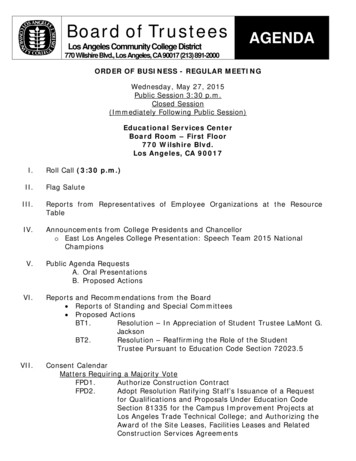
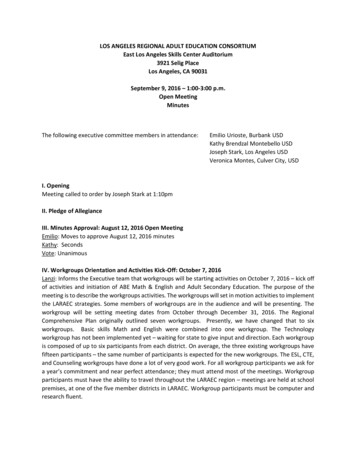
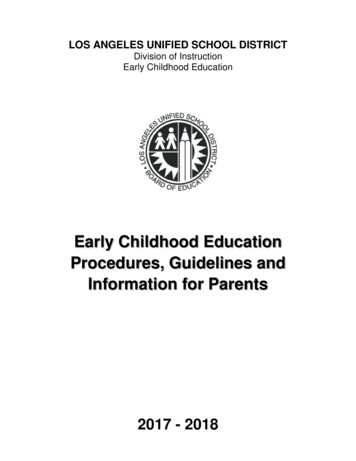
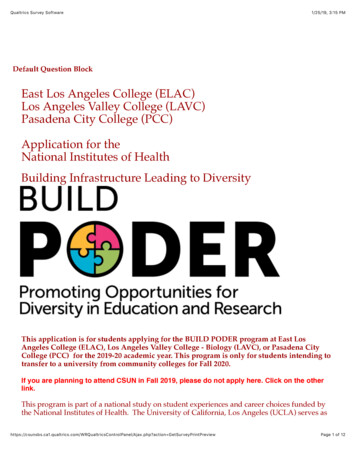
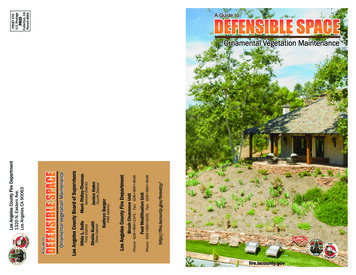
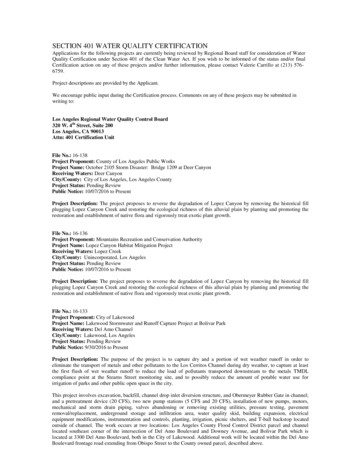

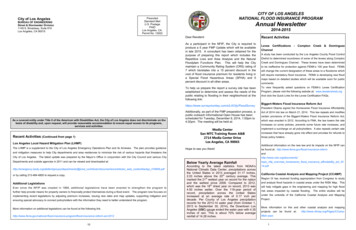
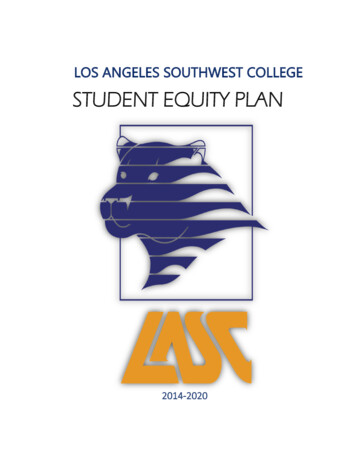
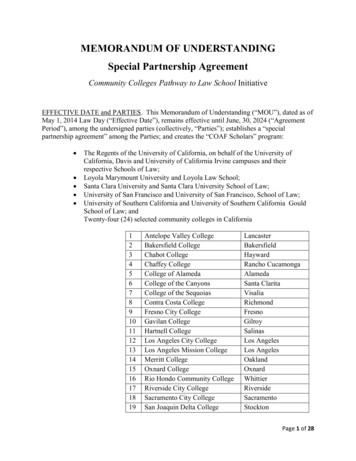
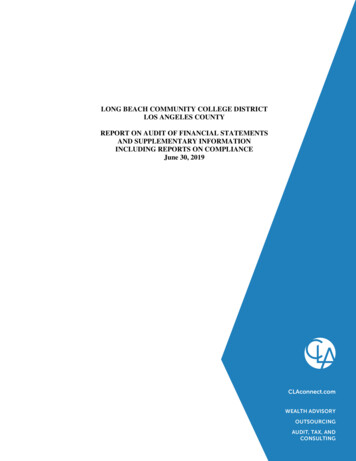
![bTBiesaFn Ep k BIsðèl EdleyIgsmnwgTTYl - calfund [.] org](/img/39/preschool-toolkit-cambodian.jpg)